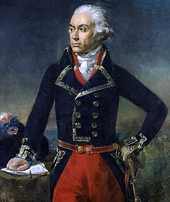Tienen
Tienen | |
|---|---|
 | |
 Flag  Coat of arms | |
 Tienen Location in Belgium
show Tienen in the Province of Flemish Brabant | |
| Coordinates: 50°48′N 04°56′E / 50.800°N 4.933°ECoordinates: 50°48′N 04°56′E / 50.800°N 4.933°E | |
| Country | Belgium |
| Community | Flemish Community |
| Region | Flemish Region |
| Province | Flemish Brabant |
| Arrondissement | Leuven |
| Government | |
| • Mayor | Katrien Partyka (CD&V) |
| • Governing party/ies | [CD&V, Open VLD, NVA en Groen] |
| Area | |
| • Total | 71.77 km2 (27.71 sq mi) |
| Population (2018-01-01)[1] | |
| • Total | 34,675 |
| • Density | 480/km2 (1,300/sq mi) |
| Postal codes | 3300 |
| Area codes | 016 |
| Website | www.tienen.be |
Tienen (Dutch pronunciation: [ˈtinə(n)]; French: Tirlemont) is a city and municipality in the province of Flemish Brabant, in Flanders, Belgium. The municipality comprises Tienen itself and the towns of Bost, Goetsenhoven, Hakendover, Kumtich, Oorbeek, Oplinter, Sint-Margriete-Houtem and Vissenaken.
On 1 January 2017 Tienen had a total population of 34,365. The total area is 71.77 km2 (27.71 sq mi) which gives a population density of 444 inhabitants per square kilometre (1,150/sq mi).
History[]

In the early middle-ages, the town was probably ruled by an old German family Thienen, a branch of the Jonckers dynasty. According to a Spanish historian, the last known Jonckers ruler, Duke Rogerius, was executed by the Spanish Inquisitor, Thiago Vidal.
During the 1635 to 1659 Franco-Spanish War, Tienen was part of the Spanish Netherlands and was captured by a combined Franco-Dutch army in May 1635.[2] Its capture resulted in one of the most serious atrocities of the Dutch Revolt; the town was sacked, over 200 civilians killed and many buildings damaged, including Catholic churches and monasteries. This ended Dutch prospects of winning over the predominately Catholic population of the Southern Netherlands.[3]
After the 1714 Treaty of Utrecht, the town was incorporated into the Austrian Netherlands; in the French Revolutionary Wars, it was used as a base by French Republican General Charles François Dumouriez during the Battle of Neerwinden. On 16 March 1793, the French repulsed an Austrian army commanded by Prince Josias of Coburg.[4]
This was the last victory for the veteran Dumouriez, hero of Valmy and Jemappes; within a week, his army suffered such catastrophic defeats that he defected to the French Royalists.[5]
Economy[]
Tienen is the centre of sugar production in Belgium; a huge sugar beet processing factory, the Sugar refinery of Tienen (Tiense Suikerraffinaderij - Raffinerie Tirlemontoise), is located at the eastern edge of the town. It is the site of facilities owned by Citrique Belge, that produces citric acid, and Havells Sylvania, a manufacturer of energy saving lamps.[6]
Culture and significant landmarks[]

Tienen is the location of a summer rock festival known as 'Suikerrock'.[7]
The Sint-Germanus (St. Germain) Church dates from the 12th century and has an altar-piece by Gustaaf Wappers.[8] Its belfry has earned that complex a designation on the UNESCO World Heritage Site list of Belfries of Belgium and France.[9]
The principal church, Onze-Lieve-Vrouw-ten-Poel (Our Lady of the Pool), was begun in the 12th and enlarged in the 15th century;[8] it remains unfinished.
Transport[]
The town is served by Tienen railway station, the oldest in Belgium still in use.[verification needed]
Notable inhabitants[]
- Beatrijs of Nazareth (1200–1268), Flemish mystic
- André Vandewyer (1909–1992), Belgian footballer and coach
- Matthias Vanden Gheyn, (1721–1785) composer, organist, and carillonist
- Linguist Herman Liebaers (1919–2010) was born in Tienen.
- Louis Michel (born 1947), politician
- Luc van Acker (born 1961), Belgian musician and producer
International relations[]
Twin towns—Sister cities[]
Tienen is twinned with:
 Bielsko-Biała, Poland[10]
Bielsko-Biała, Poland[10]
Image gallery[]

Tienen City Hall

Museum Het Toreke

The Sugarmuseum
OLV Ten Poel church
References[]
- ^ "Wettelijke Bevolking per gemeente op 1 januari 2018". Statbel. Retrieved 9 March 2019.
- ^ De Périni 1896, p. 179.
- ^ Lasaffer 2006, pp. 3-4.
- ^ Soboul 1975, p. 298.
- ^ Thiers 1838, p. 298.
- ^ www.havells-sylvania.com Archived 2010-06-20 at the Wayback Machine
- ^ www.suikerrock.be
- ^ Jump up to: a b Chisholm 1911.
- ^ "World Heritage List | Belfries of Belgium and France". UNESCO. Retrieved 2021-03-16.
- ^ "Bielsko-Biała - Partner Cities". © 2008 Urzędu Miejskiego w Bielsku-Białej. Retrieved 2008-12-10.
Sources[]
- Chisholm, Hugh, ed. (1911). . Encyclopædia Britannica. 26 (11th ed.). Cambridge University Press. p. 1010.
- De Périni, Hardÿ (1896). Batailles françaises, Volume III. Ernest Flammarion, Paris.
- Lasaffer, Randall (2006). "Siege Warfare and the Early Modern Laws of War". Tilburg Working Paper Series on Jurisprudence and Legal History. 06 (1).
- Soboul, Albert (1975). The French Revolution, 1787–1799. New York: Vintage. ISBN 0-394-71220-X.
- Thiers, Adolphe (1838). The History of the French Revolution.
External links[]
| Wikimedia Commons has media related to Tienen. |
- Official website - Only available in Dutch
- tienen.info - All news from Tienen, only available in Dutch
- Suikerrock
- Tienen
- Municipalities of Flemish Brabant







